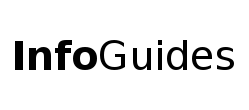
 | University Libraries
| University Libraries
"Open Educational Resources (OER) are any type of educational materials that are in the public domain or introduced with an open license. The nature of these open materials means that anyone can legally and freely copy, use, adapt and re-share them. OER range from textbooks to curricula, syllabi, lecture notes, assignments, tests, projects, audio, video and animation."
[UNESCO]
Textbook prices continue to rise at a significant rate over tuition and fees and more than three times faster than inflation. Open Educational Resources are free of cost.

Chart modified from Bureau of Labor Statistics, U.S. Department of Labor, The Economics Daily, College tuition and fees increase 63 percent since January 2006
OER enables pedagogy that traditional textbooks do not. This enables instructors to stray from “disposable assignments” and instead invite students to become producers and communicators of knowledge. Think “contributing to Wikipedia instead of response essays”. OU Modern Languages professor, Julie Ward Ph.D., published Antología Abierta De Literatura Hispana, an OER funded by an OU Libraries Alternative Textbook Grant, that is comprised of her students’ writings. This textbook and Dr. Ward's method of instruction have been recognized for their innovation and are in use at other institutions.
A multi-institutional study has shown that classes that employ OER have lower drop and withdrawal rates than those using traditional, costly, textbooks keeping students on track to graduate. Relatedly, student performance in classes using OER has been shown to be the same as or marginally improved over that in which traditional textbooks were used.
Though difficult to prove, it is easy to imagine that decreasing students’ debt while marginally increasing their performance might yield positive societal effects.
OER are typically created by grant-funded academics. A portion are also created by those who do so out of their own good will or those frustrated by the limitations of traditional texts. Many of these resources are peer-reviewed and are in use at multiple institutions of higher education. Open Education Librarians make up a global network that collect, curate, preserve, and share these resources. They also work to enable faculty to adopt, adapt, and contribute to resources in the commons. OU Libraries was one of the first academic libraries to employ a full-time staff member whose sole responsibility was to support and advocate for open education on campus.

The Open University started in the United Kingdom in 1969 as a public, distance education university. The first repository of free educational resources, MERLOT, was created in 1997 as part of a 1994 National Science Foundation grant led by James Spohrer. David Wiley, a then assistant professor at Utah State University proposed an intellectual property license specifically for free and open content that would act as an alternative to full copyright. At the turn of the 21st century, OpenStax of Rice University and the Massachusetts Institute of Technology began working towards openly publishing academic content while at the same time Lawrence Lessig among others founded Creative Commons an organization that develops legal licenses building on David Wiley's. At a 2002 UNESCO meeting of developing world nations in Paris, the term "open educational resources" was coined.
Towards the end of 2013, American universities were beginning to follow the lead of early open education adopters. In the fall of 2013 the University of Oklahoma was one of the first universities to employ a staff person solely dedicated to working on issues related to open education. In late 2018, estimates are that there are in the neighborhood of 40 such practitioners in the U.S. Further demonstrating the increasing interest in open education, the U.S. Federal Department of Education awarded $5M in grant funding to support the proliferation of open educational.
All original content on this page is licensed under a Creative Commons Attribution 4.0 International License. All linked content maintains its respective license. This page is based on a similar guide from the University of Oklahoma Libraries with permission.


Ask a Librarian | Hours & Directions | Mason Libraries Home
Copyright © George Mason University